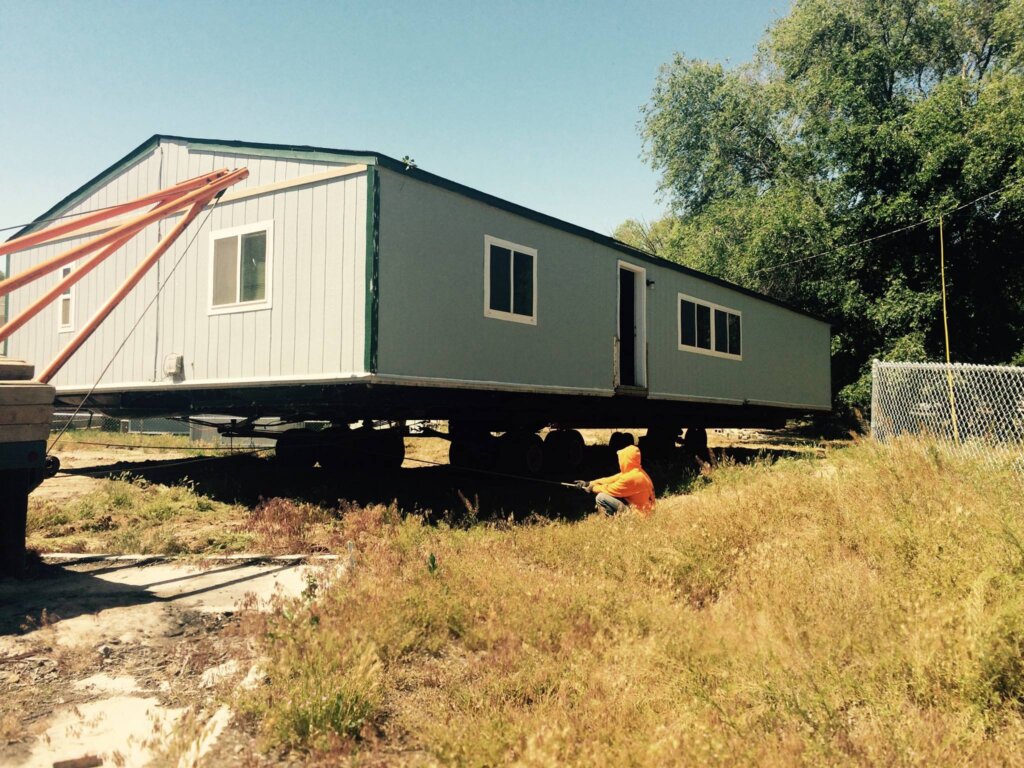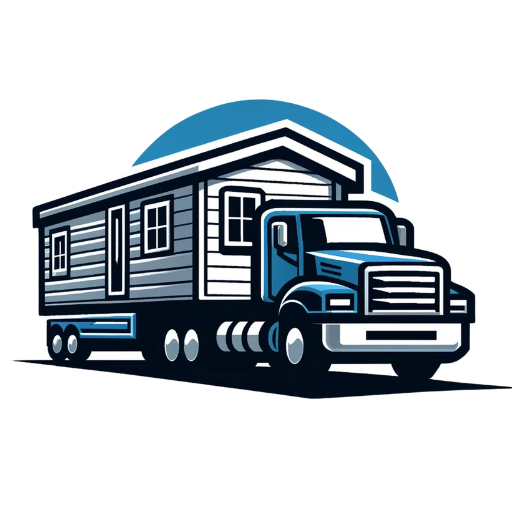When it comes to the question of how to move a mobile home, the process can be challenging, requiring careful planning and execution. Whether relocating a single wide trailer or a double wide mobile home, understanding how to move a mobile home safely is crucial for a successful transition. This guide provides comprehensive information on the steps involved, from preparation to setup at the new location, ensuring a smooth moving experience.
The process in how to move a mobile home involves various considerations, including costs, permits, and the services of professional movers. Many people wonder how much it costs to move a mobile home or if it’s possible to do so for free. This guide will address these questions and provide insights on obtaining necessary permits, selecting reliable moving companies, and preparing the mobile home for transport. Additionally, it will offer tips on setting up the home at its new site, making the entire process more manageable for homeowners.

Read These Five Tips on How to Move Mobile Home in Florida
To move a mobile home in Florida, one must follow specific guidelines and regulations. Here are five essential tips to ensure a smooth relocation process:
1. Check Local Regulations and Permits
Before initiating in how to move a mobile home, obtain the necessary permits for transportation. In Clearwater, Florida, it requires a moving permit for mobile homes, which makes sure all property taxes are paid, especially when relocating to another state. To secure this permit, homeowners need to provide a tax certificate and the title to their home. Additionally, mobile homes over three years old require an inspection to verify compliance with current building codes.
2. Hire a Licensed and Insured Moving Company
Selecting a certified and experienced mobile home mover is an important step. These professionals understand and adhere to Clearwater, Florida’s safety laws and regulations when it comes to how to move a mobile home. For instance, double-wide mobile homes are considered oversized loads and may require escort services. A reputable moving company will handle all permit requirements and paperwork for transport.
3. Prepare Your Mobile Home for the Move
Preparation is key to a successful move. Homeowners should disconnect utilities, remove skirting, and secure loose items inside the home. It’s advisable to pack belongings separately, as too much weight can damage the trailer’s axle. Professional movers can assist with disconnecting and reconnecting utilities if a full-service move is chosen.
4. Consider the Weather
Clearwater’s climate poses unique challenges for mobile home relocation, since it’s in a state that is prone to hurricanes, tornadoes, and severe weather, necessitating stringent safety and installation standards. Movers must perform soil tests to determine the appropriate anchoring system for the new location, ensuring the home can withstand high winds.
5. Budget for Additional Costs
When it comes to how to move a mobile home, various expenses beyond transportation are involved. These may include setup services, insurance coverage, and potential repairs or upgrades to meet local building codes. It’s essential to obtain a detailed estimate from the moving company, breaking down costs for technical means and consumable materials.
If you follow these steps, you’ll be able to navigate the complexities of how to move a mobile home in Clearwater, Florida, while ensuring compliance with state regulations and prioritizing safety. If you’d like more information about how to move your mobile home, don’t hesitate to call us! We’ll help you in every aspect of your move. Fill out this form below and we’ll contact you!
Mobile Home Moving Service Request Form
We move mobile homes. No need to search for mobile home moving companies any longer! Fill out the form below!


Preparing Your Mobile Home for Transport
Disconnecting Utilities
Once you’re considering the question of how to move a mobile home, you should notify utility companies up to two months in advance. This allows for proper disconnection of services and avoids potential fines. It’s important to physically disconnect your manufactured home from utility systems before transport.
Removing External Fixtures
Skirting, which protects the underside of the home, must be removed before moving. You can remove it yourself if it’s secured by screws or a simple mechanism. Porches, additions, or storage areas may need to be dismantled, depending on the moving company’s capabilities. Air conditioning units and swamp coolers should also be removed.
Securing Interior Items
To ensure safe transport, all furniture and appliances inside the mobile home must be properly secured with straps or tie-downs. Fragile items should be packed in sturdy boxes with the appropriate padding. Loose items, such as glass panels, light fixtures, and toilet tank lids, should be removed, wrapped, and packed separately. Cabinets and shower doors must be secured to prevent opening during transit.
The Moving Process
Loading and Securing the Home
Proper loading and securing are crucial in how to move a mobile home safely. Before transport, all furniture and appliances must be securely fastened with straps or tie-downs to prevent shifting. Fragile items should be packed in sturdy boxes with protective materials. It’s essential to consult the manufacturer’s manual for specific loading instructions, as different mobile homes have varying requirements.
Transporting Safely
Professional movers with experience in how to move a mobile home are necessary for safe transportation. These experts understand the complications of moving oversized loads and can navigate legal requirements. Weather conditions should be checked before transport to ensure safety. During the journey, it’s important to follow speed limits and traffic laws, remaining aware of the surroundings to adapt to changing road conditions.
Navigating Legal Requirements
How to move a mobile home involves navigating various legal requirements. A moving permit is typically required, which often necessitates proof of paid property taxes and a certificate of title. Some states may require inspections, especially for homes over three years old, to ensure compliance with current building codes. Local zoning laws and age restrictions at the destination should also be considered, as they may impact the ability to relocate older mobile homes.
Setting Up at the New Location
Preparing the New Site
If you’re asking yourself how to move a mobile home successfully, proper site preparation is crucial. This involves clearing the land and considering options like garages or driveways. A professional contractor should ensure the site is properly crowned to prevent flooding. The terrain type can affect preparation tasks, especially in areas with heavy rainfall or hilly landscapes.
Reconnecting Utilities
Reconnecting utilities is a critical step in setting up how to move a mobile home to a new location. For homes in mobile home parks, connecting to existing electricity, water, and gas lines is relatively straightforward. However, setting up utilities on undeveloped land can be more complex and costly, potentially ranging from $6,000 to $35,000. It’s essential to hire licensed professionals for these installations to ensure safety and compliance with local regulations.
Final Inspections
Once the site is prepared and utilities are connected, final inspections are necessary. These inspections help identify any remaining issues that need addressing. In Florida, for example, a Manufactured Home Installation Permit is required and must be displayed in a visible location on the home. All permits, except special use permits, typically expire after six months. Inspections ensure the installation meets safety and code requirements, providing peace of mind for the homeowner.
How Much to Move a Mobile Home in Clearwater Florida?
If you’re asking yourself how to move a mobile home in Clearwater, Florida and its prices, varies based on several factors. For a single-wide mobile home within a one-hour radius, the price ranges from USD 4,500 to USD 7,500. Double-wide mobile homes in the same radius cost between USD 8,500 and USD 14,500. These prices are because of the complexity of moving larger structures and the proximity to beaches, which typically increases costs.
For shorter distances up to 60 miles, a transport-only move for a single-wide home costs about USD 700 to USD 1,000, while a double-wide ranges from USD 2,000 to USD 2,500. Full-service moves, which include disconnecting and reconnecting utilities, are more expensive. A single-wide full-service move within 60 miles costs USD 3,000 to USD 5,000, and a double-wide ranges from USD 4,000 to USD 10,000.

How to Contact a Mobile Home Moving Services to Move my Trailer?
If you’re wondering how to move a mobile home in Clearwater, Florida, it’s important to plan every detail. From securing the necessary permits to calculating the cost, knowing how to move a mobile home requires a professional touch. Whether you’re moving a single wide mobile or a wide trailer, specialized moving equipment and a reliable truck are crucial. Before contacting a service, consider factors like trailer park regulations and how much the entire process might cost. Ready to start? To learn more about how to move a mobile home and get expert assistance, visit our website to connect with trusted mobile home moving services.
FAQ
- How old can a mobile home be to still be moved? Mobile homes built before 1976 may not meet modern building codes and are generally not movable. These homes were constructed before many regulatory standards were established.
- What is the cost of relocating a mobile home in Florida? The cost to move a single-wide mobile home in Florida ranges from $3,000 to $5,000, including disconnection, reconnection, and transport. For a double-wide, it costs between $4,000 and $10,000.
- How much does it typically cost to move a mobile home? Moving a mobile home can cost between $1,000 and $8,000 for a single-wide, or $2,000 to $15,000 for a double-wide. Costs vary based on size, weight, distance, setup services, permit fees, and the need for escort vehicles.
Helpful Links
- Mobile & Manufactured Home Safety Guide.
- More Home Site Preparation Checklist to consider

